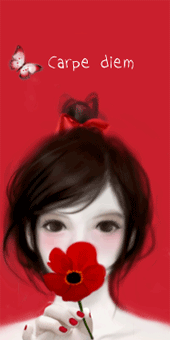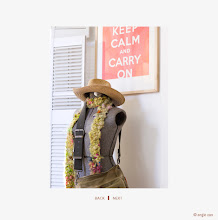domingo, 12 de octubre de 2008
domingo, 13 de julio de 2008
Important Symbols on "The Kite Runner"
 Assef (symbolizes Amir's past and the event that caused everything to change...)
Assef (symbolizes Amir's past and the event that caused everything to change...)- Assef's Brass Knuckles (symbolizes fear)
- Breast (symbolizes brotherhood since Amir and Hassan were fed at the same breast)
- Dreams (symbolizes Amir and Hassan's friendship, and so on...)
- Ford Car (symbolizes Amir and Baba's changing relationship)
- Kite (symbolizes love, joy, happiness, friendship, peace, freedom, hope, youth, the culture of Afghanistan, Baba's attention to Amir, betrayal, union, the beginning and ending of the book, and bounding of Amir and Hassan)
- Hotel Lobby (symbolizes falseness of Western affluence and modernity)
- Pigeons (symbolize faithfulness and trust, flocking to the peace and safety offered by Islam)
- Pomegranate Tree (symbolizes Amir and Hassan's friendship)
- Rape (symbolizes loss of innocence - it leads Hassan and Amir to loose their childhood friendship, for Amir to create a world of guilt for himself, and Sohrab to loose his father and attempt suicide)
- Shahnamah (the stories about Rostan and Sohrab in this book symbolize the goodness and heroic qualities of Hassan and the characteristics to which Amir aspires)
- Slingshot (symbolizes devotion - in the beginning, Hassan used it to stand up to Assef in the alley, and then at the end, Hassan's son Sohrab used it to protect Amir against Assef after returning to Afghanistan)
- Snow (symbolizes innocence)
- Sohrab (symbolizes redemption to Amir, reincarnation of Hassan in the son, and the innocent children of Afghanistan)
- Television (symbolizes Western influence as well as fulfillment of a promise Amir made to Hassan)
What is a Kite?
 A kite is a flying device that remains tethered to a fixed point or to the person flying it.
A kite is a flying device that remains tethered to a fixed point or to the person flying it. It must fly in a reasonably steady fashion at an angle of 15 degrees above the horizon for a sustained period of time to be considered a kite.
Kites may be of varying size and shape. They may be constructed of a wide variety of natural or synthetic materials.
Parts of a Kite:
- Sail: all kites have a sail or covering material.
- Bridle: most kites have a bridle. The bridle is the set of fixed lines that attach to important points on the kite frame or sail to hold the kite in a proper flying position. A few kites fly by attaching the flying line directly to a fixed point on the kite.
- Frame: some kites have a frame made of rigid materials. Others are constructed so that the sail and the bridle create a frame with the assistance of the wind.
- Line: all kites require at least one flying line to tether them into the wind. Some maneuverable kites are flown on two lines (dual-line sport kites) or on four lines (quad-line sport kites).
Mi Barrilete
 Por Negroviejo
Por NegroviejoAhora soy viejo. Pero aunque ustedes no lo crean, una vez también fui niño.
Vivía en un pequeño pueblo a la orilla del mar y solía jugar en la playa cercana a mi casa. Allí remontaba muy alto mi barrilete rojo brillante con una larga cola multicolor. Era el más hermoso del mundo.
El sol, tibio del sur, a veces me acompañaba, el viento con olor a sal revolvía mi pelo y las gaviotas, envidiosas, espiaban el vuelo orgulloso de mi barrilete.
Y yo conversaba con él. Con el hilo fuertemente atado a mi mano movía el brazo en diferentes ángulos, y él me respondía dibujando piruetas contra el cielo azul. A través del hilo, recibía la vibración de su jugueteo con el viento.
Y me decía cosas. Cosas que sólo yo entendía.
Yo percibía cuando él estaba contento. También, cuando estaba triste. El me demostraba que me quería, haciendo lo que mejor hacía, acrobacias aéreas. Así estuvimos juntos mucho tiempo, porque yo lo reparaba y lo cuidaba como si de él dependiera mi vida.
Un día, el planeaba casi inmóvil, muy alto, y entonces ocurrió algo inesperado. Sentí que me enviaba un mensaje por el hilo, eran como pequeños tirones que me decían: Es hora de separarnos, tengo que partir�
Pero yo, que quería mucho a mi barrilete, lo retuve con fuerza y lo llevé de vuelta a casa. ¡Era mío!
Esa noche tuve un sueño muy hermoso. Volaba agarrado de la cola de mi barrilete, y veía el mundo, muy lejos, en todas direcciones. El me enseñaba sus mejores acrobacias. Trepábamos muy alto contra el viento, y luego nos arrojábamos en picada, entrábamos en tirabuzón o planeábamos serenamente.
Nos divertimos como locos hasta que nos venció el cansancio. Entonces, él me habló con una melodiosa voz de viento. Me dijo:
-Eres mi amigo, mi único amigo, y te quiero mucho, pero ya debo irme.
-¿Adónde?, le pregunté preocupado.
-Al mundo de los barriletes, más allá del cielo y las estrellas, me contestó.
-¿Por qué?, volví a preguntar.
-Porque es mi destino, ya cumplí mi misión de alegrar la vida de un niño, dijo.
No me resignaba a perderlo, era mi barrilete. Muy enojado, casi le grité:
-¡No te voy a dejar ir!
El hizo una pirueta, que era como una sonrisa cariñosa, y me respondió:
-Querer, no es adueñarse, es simplemente querer. Y también aceptar que quienes amamos, deben cumplir el destino que Dios les ha señalado.
En ese momento, me desperté. Era una mañana radiante, plena de sol. Mi barrilete me miraba, desde su lugar a los pies de la cama.
Me vestí y corrí hacia la playa con él debajo el brazo. Lo remonté muy alto, e hizo las más maravillosas acrobacias que jamás había visto. Yo lo miraba extasiado.
Entonces, a través del hilo, recibí una vibración, que llegó directamente a mi corazón.
Decía: El universo es amor, y los que se quieren de verdad, un día se encontrarán. ¡Hasta ése día mi amigo!
Solté el hilo, y mientras lo saludaba agitando mi brazo, lo miré alejarse hacia lo alto, hasta que se perdió en el azul del cielo.
How to fly a kite
 Flying a kite can be done by anyone with a little patience and by following a few basic tips.
Flying a kite can be done by anyone with a little patience and by following a few basic tips. - Select an area that is free from trees, power lines and other obstructions. Large parks, vacant fields and soccer fields are perfect.
- Wait for the wind. Winds of 7-15 kmph (5-12 mph) are ideal. Winds blowing at that speed can be felt on your face. Leaves and twigs will be in motion. Wind between 12 -20 kmph (8 - 12 mph) will extend flags out. Flying is possible in winds of 3-6 kmph (2-3)mph) if your kite is light enough and you patiently work the kite into the air.
- Turn your back to the wind. Have a friend walk your kite out at least 20 metres (60 feet) downwind, holding the kite loosely. Pull the line snug. When the kite catches a breeze, pull on the line until the kite gains altitude. If necessary, walk backwards to keep the kite aloft. Be careful to look behind you to ensure your safety.
- If you are alone, place an anchor such as a tent stake or peg into the ground. Tie your kite line around the peg and walk the kite out yourself to a distance of 20 metres or so. Pull the kite line snug and prop the kite up to get it ready to launch. Return to the peg where the line is tied and pick up the line. Pull on the line when you feel a breeze. Once the kite begins to lift off pull on the line to increase altitude.
That is all it takes to launch a kite and have pleasure at the end of your kite line.
To land the kite, release tension on the kite line to allow the kite to slowly drift to the ground. If the kite is pulling hard and will not land when you let out some line, place a peg in the ground and tie your kite line to the peg. Then reach out for the line and walk towards the kite pulling the line down hand over hand. This will "walk the kite down" to the ground where you can safely pack it up for another day.
Some useful equipment to have with you:
- a long tent peg (30 cm or 12 in.) and perhaps a hammer to put the stake into firm ground;
- a pair of gloves to protect your hands. Kite line can burn and cut as it slips through your hands, pulled by a strong kite in the wind.
Special Safety Reminders!
- Do not fly near power lines or traffic!
- Large kites should always be securely staked out and the kite line tied to the stake prior to launch.
- If your kite gets away and gets tangled in power lines do not attempt to get it down!
- If your kite is tangled in a tree or high altitude spot do not worry about retrieving it. A lost kite is better than some broken bones. You can always make another kite.


























































